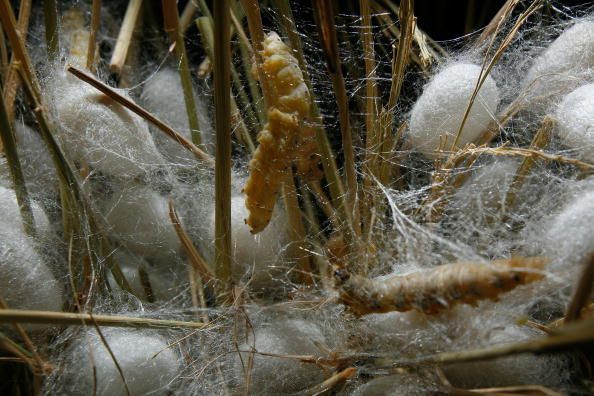
Researchers at Chemistry Department of Tsinghua University in China report a different way to obtain strong and tough silk by feeding silkworms with graphene or single wall carbon nanotube. They say that reinforced silk produced by this way can be used in many applications for example strong protective fabrics, ecofriendly wearable electronics and biodegradable medical implants.
Previously, some scientists modified the silk with dyes, antimicrobial agents, conductive polymers or nanoparticles. These modifications can be done either spinning the silk together with the additives or feeding directly silkworms with these materials.
In this study, aqueous solutions of 0.2 weight% of carbon nanotube or graphene are sprayed onto mulberry leaves, then reinforced silk is collected from worms spun their cocoons. Instead of adding reinforcements into spun silk, feeding silkworms method is more simpler and eco-friendly because applying nanomaterials into the silk needs dissolving them in some toxic chemical solvents. Unlike regular silk, modified silks have nearly two times higher mechanical strengths in terms of toughness and tensile strength. To analyze conductivity of the silk, the research team heats the silk fibers at 1050°C and found that carbon enhanced silks can conduct electricity in contrast to regular silk because modified silks have more ordered crystal structure with the help of added nanomaterials.
Similar study was reported from scientists at Donghua University by incorporating multi walled carbon nanotube into silk and measuring an increase in mechanical strength of the silk fibers. Also, silkworms were fed with titanium dioxide to obtain super-strong silk which is also resistant to ultraviolet degradation.
For more information:
https://www.scientificamerican.com/article/silkworms-spin-super-silk-after-eating-carbon-nanotubes-and-graphene/
http://pubs.acs.org/doi/pdf/10.1021/acs.nanolett.6b03597https://nanografi.com/blog/feeding-silkworms-with-carbon-nanotube-or-graphene-to-spin-supersilk/
Posted by Müberra GÖKTAŞ on January 09, 2017
Comments
Post a Comment